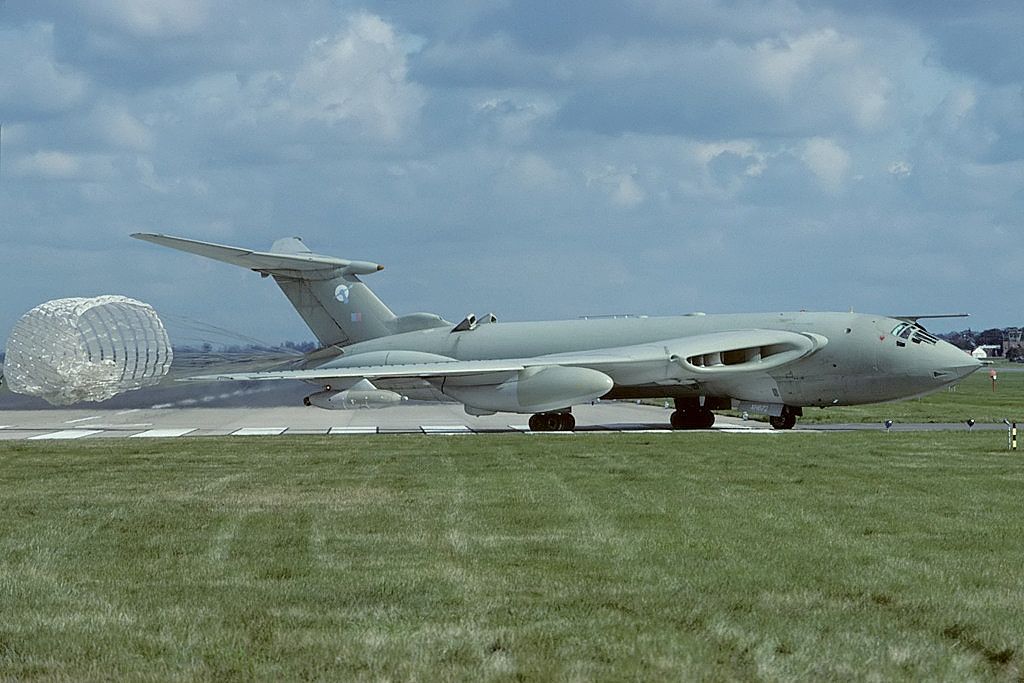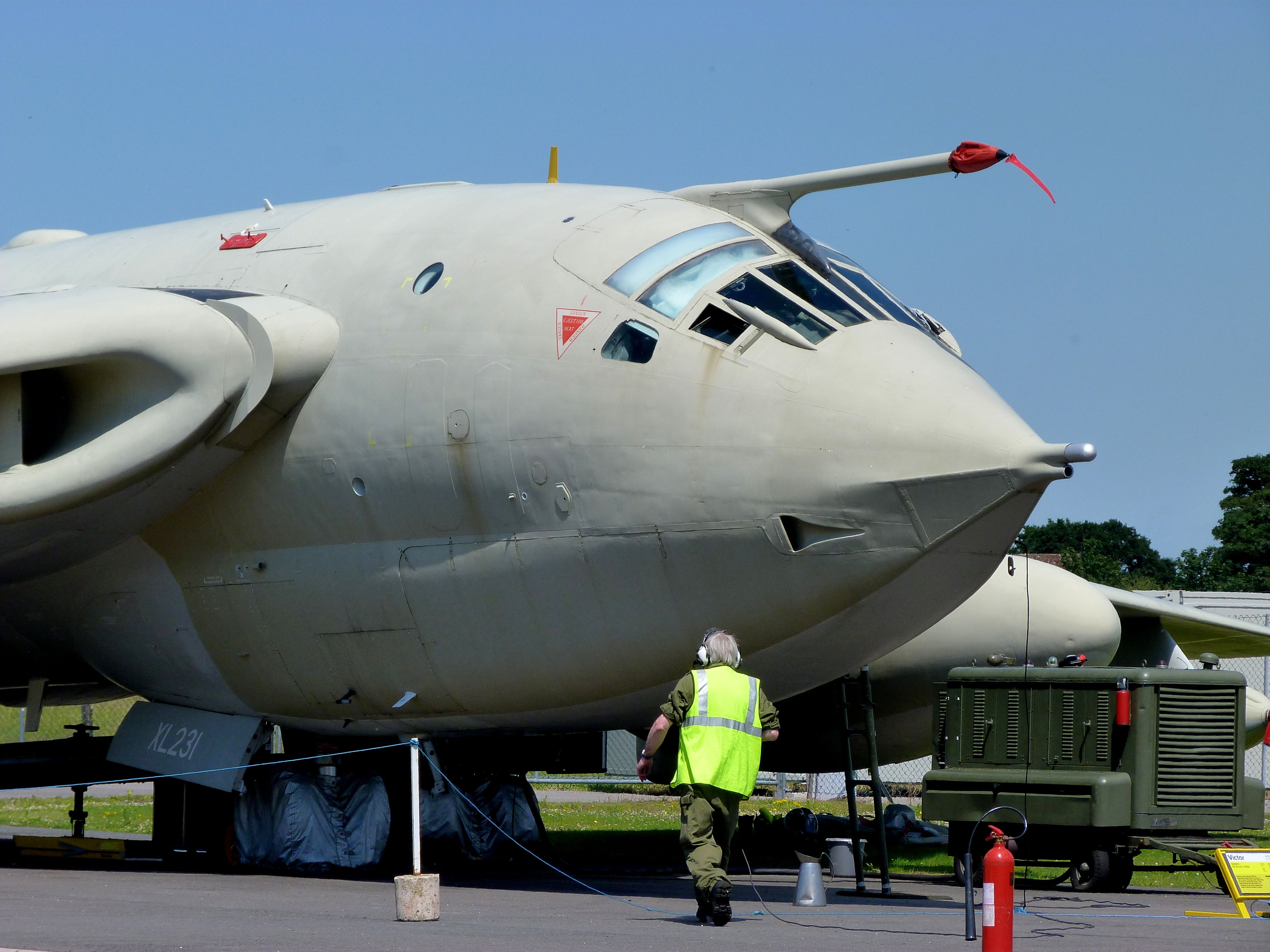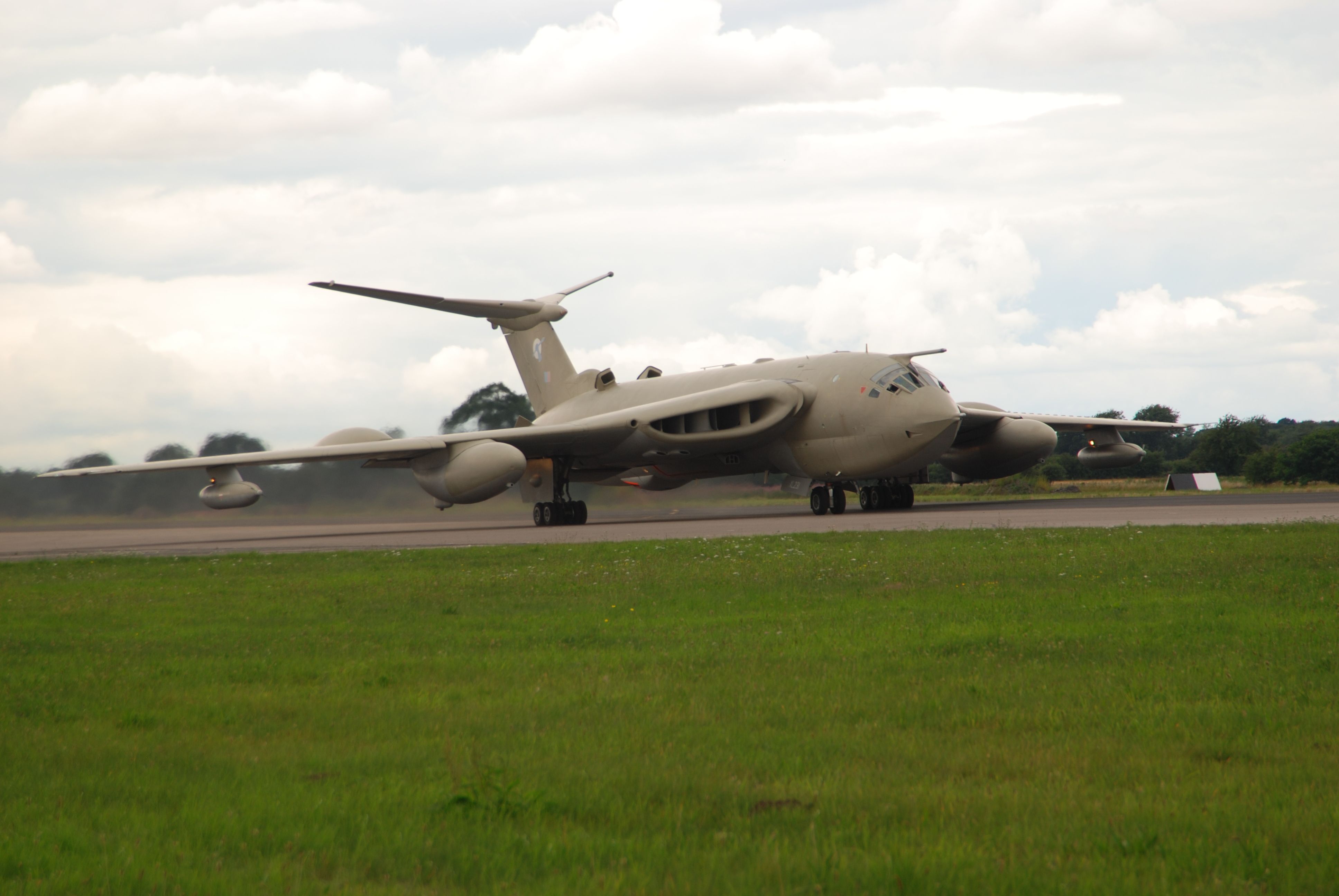Born during the Cold War as a nuclear deterrent, the Handley Page Victor was a British-built strategic bomber. It was the third V-bomber built after the Avro Vulcan and Vickers Valiant. The origin of the Victor and the other V-bombers can be traced back to the end of the Second World War as a British deterrent to the Soviet Union.The United Kingdoms's atomic weapons program began officially in January 1947 with the research and development of nuclear weapons.The Ministry of Defense issued guidelines for a nuclear bomb that would not be longer than 24 feet two inches and have a maximum diameter of five feet while not weighing more than 10,000 lbs. The bomb also had to be suitable for release from the aircraft at a height of between 20,000 and 50,000 feet.
The RAF wanted to replace Lancaster bombers with jets
At the same time as the bomb was being designed, the Air Ministry also released requirements for a new jet-engined plane to replace its aging piston-powered Avro Lancaster bombers. The plane needed a range of 1,500 nautical miles carrying a 10,000 lb bomb and a cruising speed of 580 mph at an altitude between 35,000 and 50,000 feet. Fitted with no defensive weaponry, the plane needed to rely on its speed and altitude to avoid intercepting fighter aircraft.
The Air Ministry simultaneously asked for a longer-range bomber that could comfortably travel 2,300 miles and cruise at 50,000 feet at a speed of 575 mph. Realizing that such an aircraft could be costly, the Air Ministry was looking at a limited number of aircraft rather than one that was mass-produced. As a result, the long-range bomber idea was dropped in favor of a medium-range aircraft that could be deployed from one of the RAF's bases in the United Kingdom or abroad.
A Victor broke the sound barrier
Handley Page built two prototypes that would eventually become the Victor bomber, but because the planemaker's runway at Radlett airfield was too short, the planes needed to be tested at RAF Boscombe Down in Wiltshire. On June 1, 1956, a Victor bomber being flown by a test pilot exceeded the speed of sound to become the largest aircraft that had broken the sound barrier.
Victor's were converted to become tankers
After entering service with the RAF in 1958, the Victor bomber only served as a United Kingdom nuclear deterrent for ten years. By 1968 the United Kingdom had decided to arm its submarines with Polaris nuclear missiles. Knowing that the nuclear deterrent would now be the role of the Navy, the RAF decided to convert some of its Victor bombers into tankers.
The idea was to use the Victors to refuel the Air Force's Vulcan bomber and replace its aging Victor Valiant tankers. The re-purposed Victor bombers also played a role during the 1982 Falklands war, refueling Vulcan bombers for an air raid on the airfield at Port Stanley.
The Victors were the last V-bombers to serve in the Royal Air Force and were eventually replaced as tankers by Vickers VC10 and the Lockheed Tristar in October 1993.



